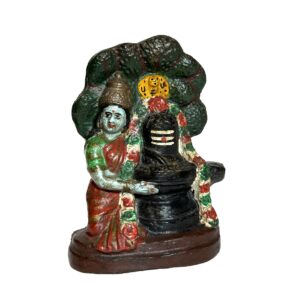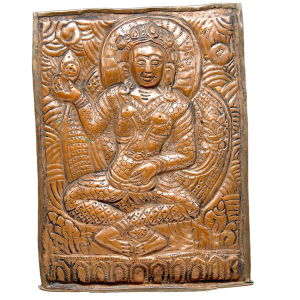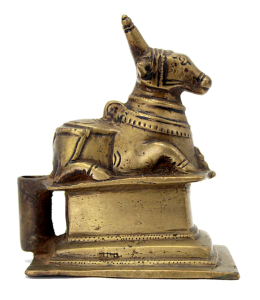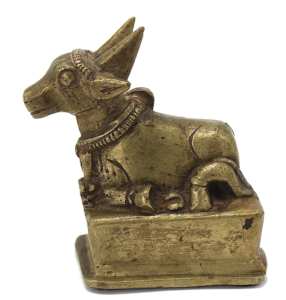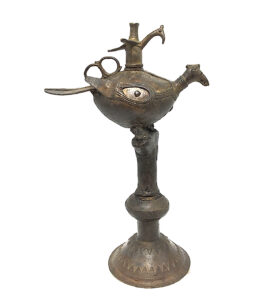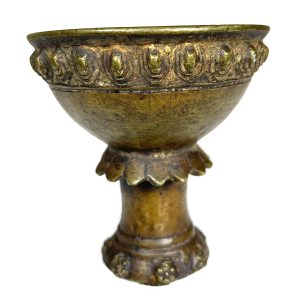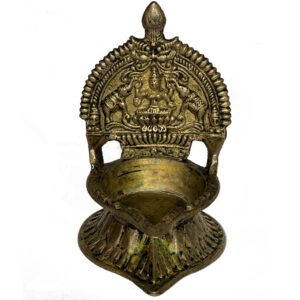Hindu Home and Temple Shrines and Religious Practices
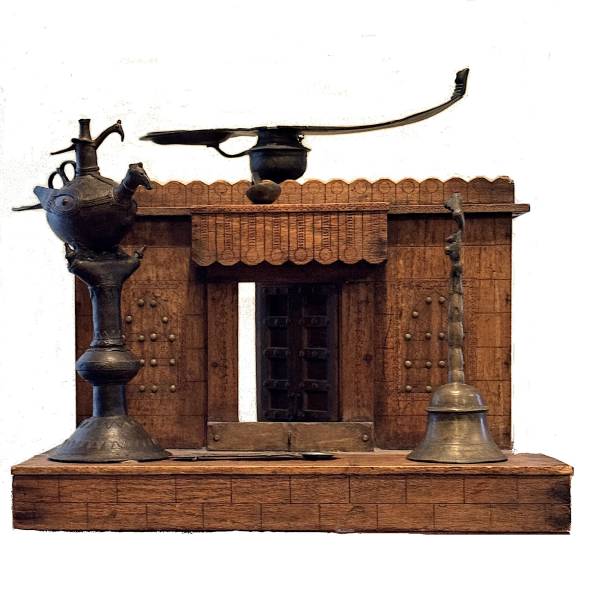
A home shrine or altar room or space is the most important part of a household in the Hindu tradition. It is dedicated to house statues and images of the gods and goddesses who are believed to protect the family and engender good fortune. While daily prayer, rituals, ceremonial worship, and devotional homage (puja) are practiced there by family members who pray together, the shrine/altar serves an even greater purpose: it is a sacred space where all family actions and decisions are made.
Puja, (pooja, poojah) a Sanskrit meaning homage, adoration, reverence, honor, and worship, is the Hindu worship of gods, spirits, or other aspects of the divine by showing reverence and devotion through a prayer (bhajan), supplication, songs, and rituals (Lotus Sculpture). These may take place at shrines in temples, homes, or outdoor public spaces where any Hindu deity can be venerated. The devotee in these rituals aspire to make a spiritual connection with the divine, and traditional objects such as a sculpture, a vessel, a painting, a print, or even an object from nature may be used to facilitate interactions and connections. (Lotus Sculpture) Painted images are often placed above altars such as this glass panel of Krishna playing he flute. Krishna is a major Hindu deity worshiped as the eight avatar of Vishnu and as a Supreme God of protection, compassion, tenderness and love.
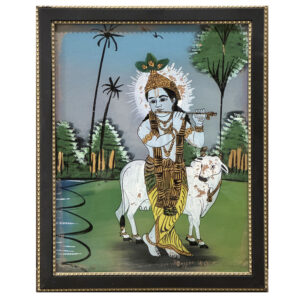
Hindu priests are intermediaries between worshipers and deities in temples, while in the home no intermediaries are necessary as the interface between worshipers and the gods is direct. The connection is achieved simply through the act of daily puja that is led by a family member with the participation of others at their home shrine. (Lotus Sculpture) The size or richness of a shrine is a personal matter and may range from just a row of prints on the wall to a fully decorated room. A shrine might contain as least one statue or image of a deity called a murti, which helps devotees focus on varying aspects of that deity, “By showing love and respect to the murtis, Hindus believe that they are showing devotion and love to God.” (Religious Artefacts) Each image is considered sacred and is believed to be filled with the spirit of the deity it represents. The choice and numbers of divinities placed on the shrine is also personal and reflects the beliefs of individual family members. Families encourage children to select the gods or goddesses they find inspiring and wish to venerate, and there may be many more than one shrine in a home and many deities chosen for veneration.
The most common shrine deities are Ganesh, Shiva, Parvati, Vishnu, Lakshmi, Saraswati, and Nandi, which are traditionally made of bronze, brass, terracotta, wood, stone, and marble. Affluent families may have images in copper or gold.
Many Hindus have an image of Ganesha on their shrines. He is the son of Shiva and Parvati and one of the five primary Hindu deities along with Brahma, Vishnu, Shiva and Durga. One of the most popular Hindu deities he is worshiped to remove barriers and bestow wisdom and good fortune and is and the first deity prayed before worshiping other deities. His sits on his vehicle a rat or mouse who represents the fear that can overwhelm as we begin new ventures. The rat, who gnaws through barriers and the elephant together removes obstacles, of all sizes. and the combination of the elephant and the rat symbolizes that all obstacles, of whatever size, are removed. Having the rat with food around or under his feet reflects that desires and wealth are both under Ganesha’s control.
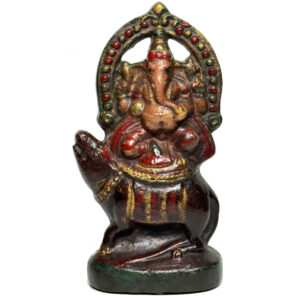
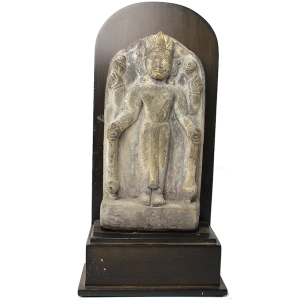
Shrines contain a “puja tray” with seven items to help devotees use all senses in worship, symbolizing that the whole person is involved in devotion. The items are a bell, an oil lamp, an incense holder, incense, a water container, a spoon and a chopra container for kum kum (kumkuma), a red powder used make a mark (tilak) on the forehead of the follower. Hindus believe that images must be properly cared for and assure that they will not abandon the shrine, so, deities are regularly bathed by family members to honor them. (Religious Artefacts).
Hindu society has close ties to the Dhokra community as their religious images are highly sought after for home worship (puja) and for many religious festivals. Dhokra are a nomadic group of tribal metal smiths from Eastern India that over several millennia settled in different sections of Indian provinces and ended in tight-knit communities in Orissa (now called Odisha), West Bengal, and Eastern India. Newly married Hindu couples installed these images to bring prosperity and happiness to their homes. The measuring bowls of different sizes were regarded as symbols of the goddess Lakshmi and were greatly prized fpr puja by local villagers who could afford them. (Smith and Kochhar) In Hinduism rice plants that are about to be harvested represent the Lakshmi, the Hindu Goddess of wealth, prosperity, and fertility
A puja tray in Hinduism consists of a bell to welcome the gods and dismiss evil, oil lamps (diya) for illumination and focus on deities, an incense burner to purify the air, container of water, a container of kumkum or sindoor powder for markings called a tikka on the forehead and a spoon for water-serving rituals to offer the gods devotion and respect. Water is offered to the gods on a spoon such as this finely made antique silver spoon to show respect. Water is a sacred way for Hindus to cleanse and purify one’s body, mind and spirit. The mother of the house bathes murti (deity images) to clean and purify them as offerings of reverence and piety. The lotus design on this spoon is a symbolic connection to Lakshmi, the Hindu Goddess of wealth and prosperity who is often portrayed sitting on a lotus, her favorite flower. During daily Lakshmi puja, devotees offering her a lotus flower are said to be rewarded with good fortune.
Puja consists of three components designed to offer a multi-sensory experience to the devotees: viewing the deity’s image, worship that includes making offerings, and later consuming them. (Lotus Sculpture) The household leader chants prayers to each deity to whom devotion is directed. They are offered a seat, water, and having their feet washed, and may be provided other forms of veneration: bathing, being clothed in new garments, embellished with ornaments, flowers, or garlands, and having perfumes and ointments applied to them. Incense is burned, a lighted oil lamp or a candle is waved before the deity (beliefnet.com), and bells are sounded. All these are part of ritual worship (aarti), which is itself part of a puja that always includes offering light, usually from a flame, to the deity or deities included in the shrine. The following two prayers are part of the daily puja:
- “O Mother Lakshmi, as we wave this sacred light before you, we humbly request that you bestow your grace upon us. Do protect everyone from the sorrow of this world and bless us.”
- “As we light the lamp of love in our hearts we perform your aarti. O light of the world, remover of all distress, do destroy the darkness from our eyes.”
The family presents food offerings called prashad such as cooked rice, fruit, butter, and sugar; members then bow before the image; sip the water which they gave to the god, and accept and eat their food offering. Performing these actions are blessings for the deities who, in turn, have blessed the food and water consumed by their followers. (Lotus Sculpture) Special prayers may be offered directly to Ganesh, the remover of obstacles when family members embark on a new venture or experience a birth in the family, and others may be consulted or have a special request. Hindus believe worshippers keep the spirit of the deities alive, active, and focused on them because of their prayers and offerings. (beliefnet.com)
In rural areas, outdoor shrines are often seen along roads, sidewalks, crossroads, pathways, and trails through forests. In some instances, these shrines combine local beliefs with Hindu puja. When new shrines are first constructed, worshippers recite special prayers and make offerings to sanctify the site and to bring the power of multiple deities to occupy the site and its images. (ucdavis)
Web Sources
- Beliefnet.com, An Altar of My Own,
- Lotus Sculpture, Puja, An In Depth Look,
- Religious Artefacts, The Hindu Home Shrine,
- David Smith and Rajesh Kochhar, “The Dhokra Artisans of Bankura and Dariapur, West Bengal: A Case Study and Knowledge Archive of Technological Change in Progress,”
- UC Davis, Spirit Houses, Shrines and Altars,

